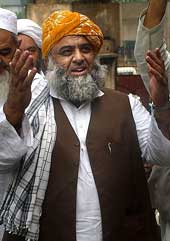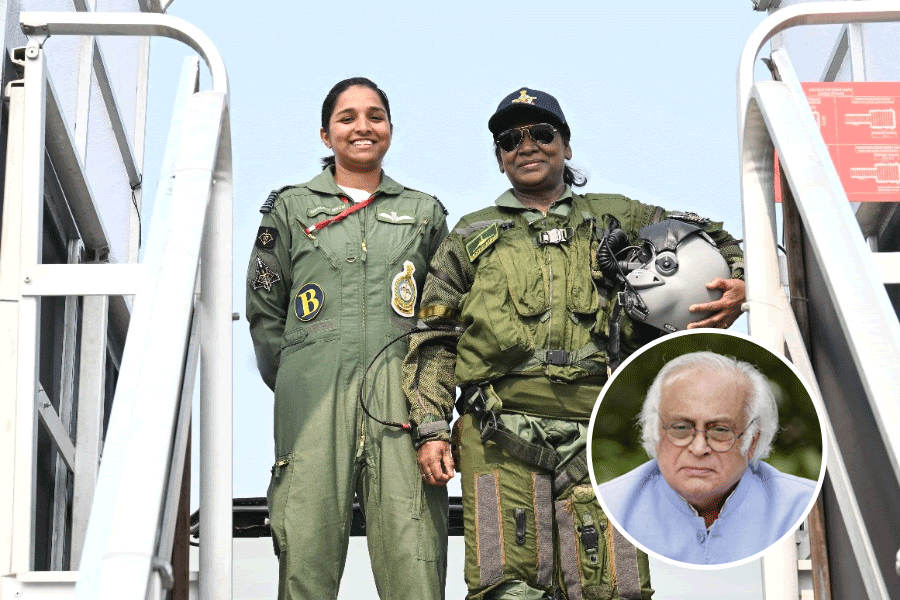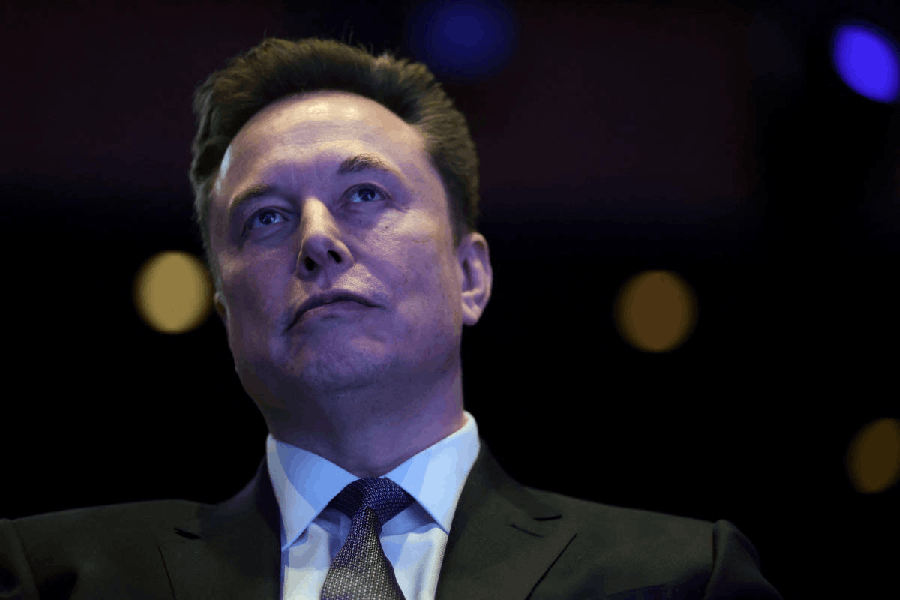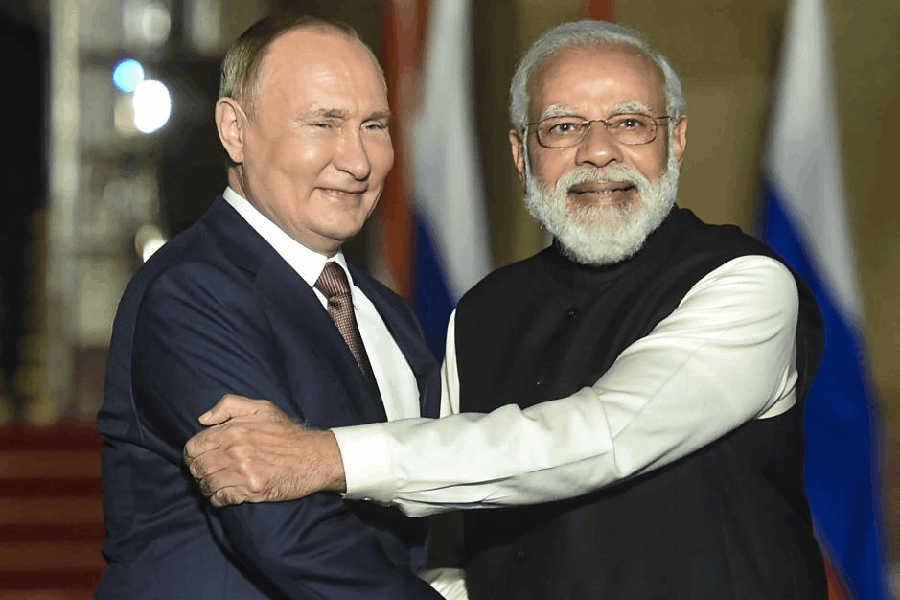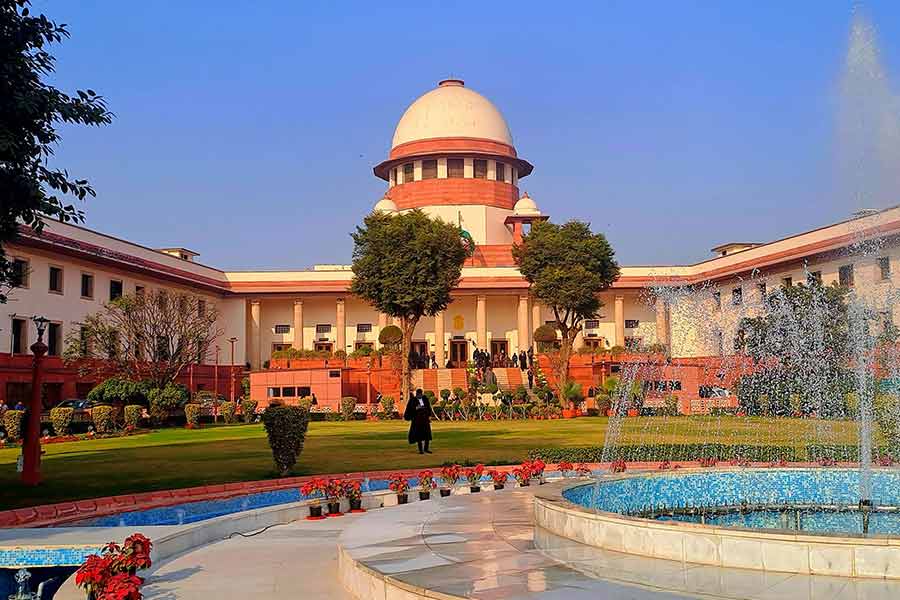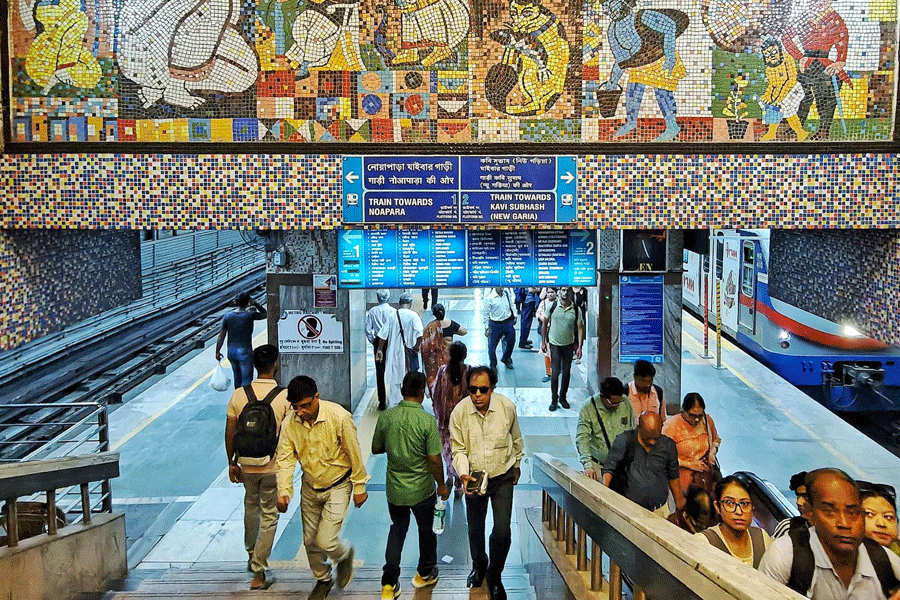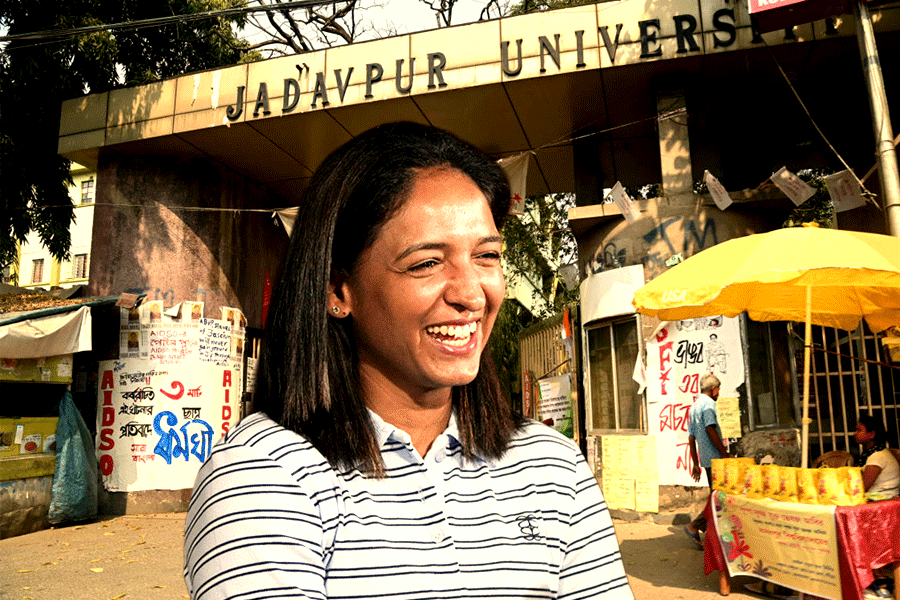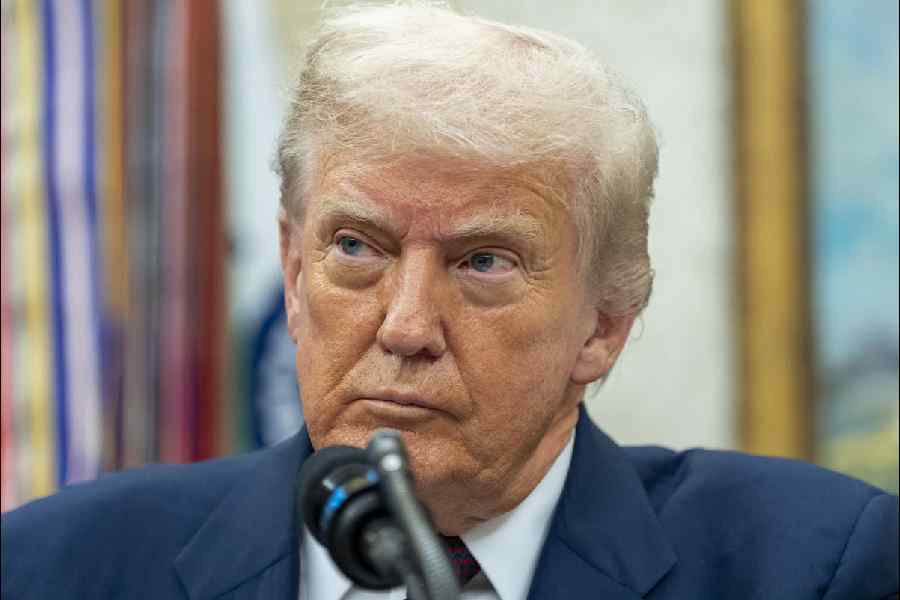|
|
| Southern comfort |
It was a full house on May 12, spruced up for the occasion of M. Karunanidhi’s “golden jubilee as a legislator”. The polished teak wood panels in the historic Tamil Nadu assembly chamber were decorated with the choicest sweet-smelling roses and jasmine spirals.
As the Lok Sabha speaker, Somnath Chatterjee, took the presiding officer’s chair to felicitate the Dravida Munnetra Kazhagam president and chief minister, the cynosure of all eyes was — for a long moment — what used to be called the ‘governor’s box’ in the upstairs gallery.
In one of them was Karunanidhi’s elder wife, Dayalu Ammal, dressed in a deep blue silk sari. With her was their eldest son, M.K. Azhagiri, fresh out of the controversy over who would succeed Karunanidhi. (His fans set fire to the Madurai office of the Tamil Newspaper, Dinakaran, after it published an opinion poll which suggested the name of his half-brother, M.K. Stalin, as Karunanidhi’s possible successor.)
Hardly a few metres away, in another similar enclosure, was seated the DMK patriarch’s younger wife, Rajathi Ammal, in a pretty pink sari, along with their poetess-daughter, Kanimozhi, and the latter’s son, Adityan. Both Dayalu and Rajathi Ammal, as well as Azhagiri and Kanimozhi were brought up from under the shadow of the speaker’s chair at the function.
But that rare scene also became a telling metaphor for the changing tides in the DMK. The ladies of the party’s first family were arranged in a circle right inside the hall of representative democracy, almost symbolic of the prominence they now enjoyed as the new power centres.
It was not as if women did not influence political affairs before in the DMK. Whenever Karunanidhi visited his home town of Tiruvarur, he would tease his family’s women for giving him a manu (petition) in the kitchen when they should be reeling off the ‘menu’. But, as he shortly turns 84, the key women in his household increasingly have a greater say.
The Maran brothers — Dayanidhi and Kalanidhi — whose falling out with their great-uncle has caused a minor turmoil in Tamil politics, should have taken a lesson from an incident during the Emergency. A cartoon caricaturing Indira Gandhi as ‘Hitler’ in the DMK party organ, Murasoli, in 1976 swiftly landed ‘Murasoli’ Maran, the nephew and confidante of the DMK patriarch and father of Dayanidhi and Kalanidhi, in jail, along with Karunanidhi’s younger son, M.K. Stalin. That became a defining moment in the power equations between the two main streams of the DMK’s first family — Karunanidhi’s extended family on the one hand and the Maran family on the other.
Murasoli Maran, who later went on to become India’s commerce minister under Atal Bihari Vajpayee’s National Democratic Alliance regime, was often called by ‘Kalaignar’ Karunanidhi his “conscience-keeper”. Needless to say, there was no badblood between the two families, despite the occasional political difference, till Senior Maran was alive.
Three decades later, if the women in Karunanidhi’s family are now at the forefront of a spirited combat to ward off any threat allegedly posed by the two sons of the late Murasoli Maran, it can be explained in terms of the third law of Newton about all actions having equal and opposite reactions. Kalanidhi Maran, incidentally, heads the South’s largest private satellite television, the SUN Network (and also owns Dinakaran), while Dayanidhi, before he was forced to quit, was the Union information technology and telecommunications minister. It is difficult to miss the possibilities of convergence and conflict of interests here.
Karunanidhi has been the unquestioned leader of the DMK ever since the party founder, C. Annadurai, died in 1969. He has weathered many a political storm and defeat, including two major splits in the party. His oft-repeated boast, that “the entire DMK is one family,” assumes a peculiar significance in the light of the recent family feud.
Between the two brothers, the Maran family has accumulated a considerable amount of wealth and power — enough for the brothers to contemplate coming out of the wings of the DMK patriarch. For anyone who cared to see, the chemistry between the two families was changing slowly but surely.
The ties between the two branches have been cemented through years of political adversity. However, the ties of the Karunanidhis with the Maran brothers came under increasing strain after Murasoli Maran’s death in November 2003. The junior Marans, with their technological savvy and big ideas about the new global marketplace, started dreaming ‘big’ about the DMK’s future as well. There soon came a point when Kalanidhi, also a dominant player in cable TV network business, could no longer see SUN TV as just the DMK’s voice, nor make the publications under their fold resemble the DMK party organ, Murasoli. For all their declared commitment to Karunanidhi’s leadership, the Maran brothers ignored the fact that, by his own confession, Murasoli is the very breath and substance of the Kalaignar’s political life.
The first visible sign of a parting came in November 2005, when Karunanidhi’s extended family sold all their shares in SUN TV and allied publications to the junior Marans, signalling the party’s distancing from the media house. Karunanidhi’s younger son and his widely expected successor, Stalin, openly said that the only newspaper the DMK could swear by was their good old party organ.
Although the Maran brothers put all their weight behind both Kalaignar and Stalin, the heir-apparent to the throne, in the run-up to the May 2006 assembly elections, a game of one-upmanship was already smouldering within the party, vis-à-vis the Maran family and Karunanidhi’s siblings. Adding to the displeasure of the Karunanidhis was the way the younger Marans threw their weight about, thanks to SUN TV becoming a huge money-spinner.
As Dayanidhi Maran was seen to be getting more politically ambitious and trying to influence more partymen, he was no longer the do-good-advisor from Delhi to Karunanidhi — the role so impeccably played by his father. People in the know in the DMK even feared that if the junior Marans were not put in their place fast, they could even use their growing political and financial muscle to “capture the party from within”. The Dinakaran opinion poll itself was seen as a clever ploy to drive a wedge between Stalin on the one hand and Azhagiri and Kanimozhi on the other, so that the resultant confusion within the party could help the junior Marans to establish their control in the DMK.
Sensing the gameplan from the smoking chambers within the family and the party, Stalin, Azhagiri and Kanimozhi, according to sources, closed ranks, even as their respective mothers braced up for a direct confrontation with the Maran family. Dayalu and Rajathi Ammal told the Kalaignar in no uncertain terms that they do not want their children to be left in political peril by the “growing ambitions” of the Junior Marans.
The May 9 violence in Madurai — on which a CBI inquiry has now been ordered — came as the proverbial last straw for the DMK. The party wanted Dayanidhi Maran recalled from the Union cabinet for his “anti-party activities”. The events that followed reached their logical conclusion, with Kanimozhi being given a Rajya Sabha ticket by the party.
Karunanidhi’s latest move has clearly signalled that Kanimozhi will henceforth be the DMK’s “new, young, and trusted face” in New Delhi. A rapprochement between the two feuding families is still possible, but for now, the Raaj Maathas (royal mothers) of the Karunanidhi family have won hands down.

